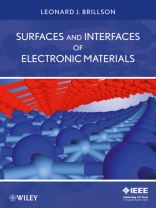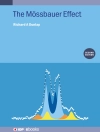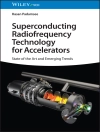An advanced level textbook covering geometric, chemical, and electronic structure of electronic materials, and their applications to devices based on semiconductor surfaces, metal-semiconductor interfaces, and semiconductor heterojunctions.
Starting with the fundamentals of electrical measurements on semiconductor interfaces, it then describes the importance of controlling macroscopic electrical properties by atomic-scale techniques. Subsequent chapters present the wide range of surface and interface techniques available to characterize electronic, optical, chemical, and structural properties of electronic materials, including semiconductors, insulators, nanostructures, and organics. The essential physics and chemistry underlying each technique is described in sufficient depth with references to the most authoritative sources for more exhaustive discussions, while numerous examples are provided throughout to illustrate the applications of each technique.
With its general reading lists, extensive citations to the text, and problem sets appended to all chapters, this is ideal for students of electrical engineering, physics and materials science. It equally serves as a reference for physicists, material science and electrical and electronic engineers involved in surface and interface science, semiconductor processing, and device modeling and design.
This is a coproduction of Wiley and IEEE
* Free solutions manual available for lecturers at www.wiley-vch.de/supplements/
Table of Content
Preface
1. Introduction
2. Historical Background
3. Electrical Measurements
4. Interface states
5. Ultrahigh vacuum technology
6. Surface and interface analysis
7. Photoemission spectroscopy
8. Photoemission with soft X-rays
9. Particle-solid scattering
10. Electron energy loss spectroscopy
11. Rutherford backscattering spectrometry
12. Secondary ion mass spectrometry
13. Electron diffraction
14. Scanning tunneling microscopy
15. Optical spectroscopies
16. Cathodoluminescence spectroscopy
17. Electronic Materials’ Surfaces
18. Adsorbates on Electronic Materials’ Surfaces
19. Adsorbate-Semiconductor Sensors
20. Heterojunctions
21. Metals on semiconductors
22. The future of interfaces
Appendices
About the author
Leonard Brillson is a professor of Electrical & Computer Engineering, Physics, and Center for Materials Research Scholar at The Ohio State University in Columbus, OH, USA. Prior to that, he was director of Xerox Corporation’s Materials Research Laboratory and had responsibility for Xerox’s long-range physical science and technology programs at the company’s research headquarters in Rochester, N.Y. He is a Fellow of IEEE, AAAS, AVS, and APS, and a former Governing Board member of the American Institute of Physics. He has authored over 300 scientific publications and received numerous scientific awards, including the AVS Gaede-Langmuir Award.












